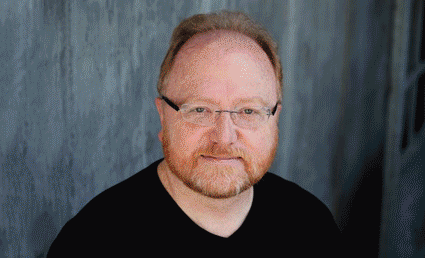
By Gary M. Kaye
Editor-At-Large & Chief Content Officer,
Tech50+ (www.tech50plus.com)
According to CableLabs, the research arm of the cable industry, 93 percent of Americans are within reach of cable. That means they either have it in their homes or it comes to their curb. And despite reports of so-called cord cutting or cord shaving, for most of us, cable remains the primary conduit for getting information and entertainment into our homes.
Now the industry is trying to plan for what it sees as a dramatic shift as more of us consume television over the Internet, giving up traditional cable channels. Phil McKinney, CEO of Cable Labs – the research arm of the cable industry – is leading that effort. McKinney was the long time Chief Technology Officer at Hewlett-Packard, dubbed the company's "PC Guru". Two areas where McKinney sees the cable industry expanding are in connected healthcare and aging in place.
"Any of those technologies that are going to come into the home and support the ability to age in place is going to be dependent on some form of broadband access,” McKinney said. “Therefore, the reach and ability to get it into people’s homes – today 93 percent of all U.S. homes have cable running down the curb – so technologies that are going to better the home whether that be the sensors, technologies that’ll help the family provide a support network, to reach out to medical professionals – it really is dependent on that access to the broadband network.”
He envisions a world in which the cable provides the primary means of connecting the home to healthcare monitoring, and the means to age in place. But he admits that older consumers have been reluctant to embrace this new world.
“This is probably the biggest challenge,” he noted.” I’ve been through this with both of my parents, my mom was a double amputee, and my dad had cardiomyopathy and was on kidney dialysis. Fortunately, my wife was a nurse and quit nursing to stay home. Even though we gave my parents almost 3,000 square feet in the other end of a large house I bought specifically to take care of them with us living in the same house, they didn’t want cameras down there, they didn’t want the monitoring.
“This becomes the real challenge, McKinney continued. “We need to, I don’t want to say hide, but make this technology less intrusive and at the same time give the person the ability to control what information is shared.”
McKinney said tech-savvy seniors should be given a choice. ”When “something outside the norm happens, like the device knows you’ve fallen, that’s probably the time someone says ‘yes, call my kids.’ But if I’m getting up in the middle of the night to use the bathroom, I don’t need my kids knowing every night I’m getting up at 4 o’clock to go use the bathroom,” he said. “And it’s not just cable, the whole healthcare space has not figured out where to draw that line and how to do that effectively.
“I think it is a huge barrier for seniors to accept technologies in the home if they feel like they’re going to be treated like little kids. You’ve gone from the baby cam when you're in the crib to the granny cam now that you’re a senior and are we just completing that cycle where the kids are constantly watching you. Nobody wants that,” he said.
However, McKinney sees great potential for home healthcare monitoring. A number of health care providers and hospital systems are now set up so patients can have virtual office visits, with phones, tablets, and McKinney believes, eventually with two-way T.V capabilities. These transactions can take place over home wi-fi networks, with Internet service from the cable company. McKinney also noted there's been progress in using technology to monitor chronic disease populations, such as congestive heart failure, COPD, and diabetes. Most of the studies to date show that transmitting vital signs such as blood pressure and weight on a regular basis can help dramatically reduce the need for re-hospitalization. But to have cable transition to the pipeline that supports aging in place and healthcare monitoring is going to require large investments, something McKinney said the cable industry is prepared to do.
“What the cable industry is working on, for instance Cox, in both some of its investments it has made in some startup companies in home health … with their smart home strategy is working on kind of a first step on how do we make homes smarter, how do we make it easier for people to bring technologies into the home to add some capabilities whether its home monitoring, or plugging in health care devices etc.” He said. “Is the cable industry going to deliver the entire solution? No, but we want to inspire conversation and inspire innovators who can solve these challenges and build those on top of the network.”
McKinney said his industry faces huge challenges, especially as more people look to wireless to deliver entertainment. But he feels cable is well-positioned to provide the huge data streams that are going to be required for future generations of services – from security, to connected home, home healthcare monitoring, and beyond.
Gary Kaye is the creator of Tech50+ (www.tech50plus.com), the leading website covering technology from the Baby Boomer perspective. Kaye has been covering high tech for more than 30 years with outlets including NBC, ABC, CNN and Fox Business. He is a regular contributor to AARP and other websites on issues regarding the nexus of technology, seniors and baby boomers.